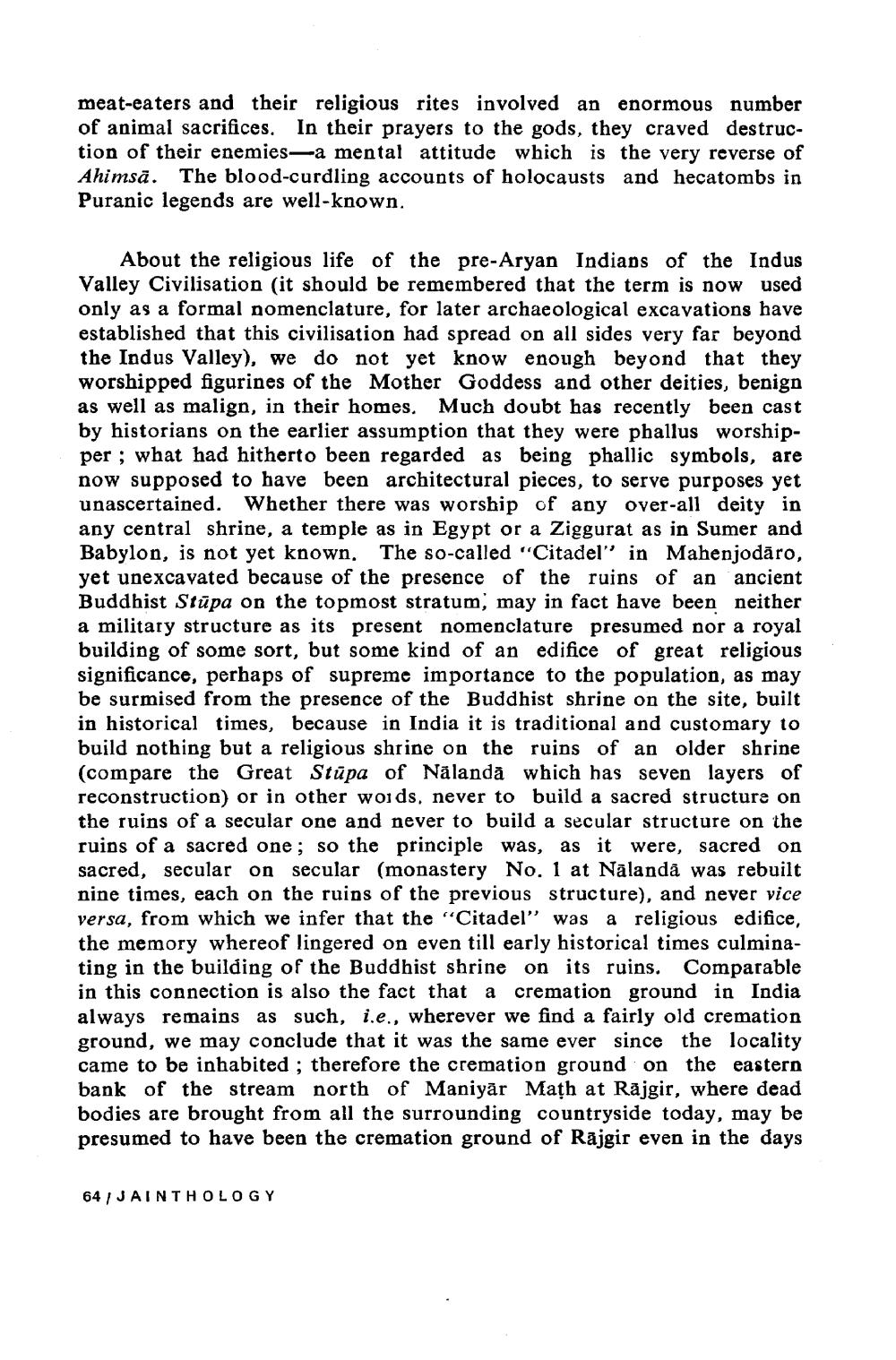________________
meat-eaters and their religious rites involved an enormous number of animal sacrifices. In their prayers to the gods, they craved destruction of their enemies--a mental attitude which is the very reverse of Ahimsă. The blood-curdling accounts of holocausts and hecatombs in Puranic legends are well-known.
About the religious life of the pre-Aryan Indians of the Indus Valley Civilisation (it should be remembered that the term is now used only as a formal nomenclature, for later archaeological excavations have established that this civilisation had spread on all sides very far beyond the Indus Valley), we do not yet know enough beyond that they worshipped figurines of the Mother Goddess and other deities, benign as well as malign, in their homes. Much doubt has recently been cast by historians on the earlier assumption that they were phallus worshipper; what had hitherto been regarded as being phallic symbols, are now supposed to have been architectural pieces, to serve purposes yet unascertained. Whether there was worship of any over-all deity in any central shrine, a temple as in Egypt or a Ziggurat as in Sumer and Babylon, is not yet known. The so-called "Citadel" in Mahenjodāro, yet unexcavated because of the presence of the ruins of an ancient Buddhist Stūpa on the topmost stratum, may in fact have been neither a military structure as its present nomenclature presumed nor a royal building of some sort, but some kind of an edifice of great religious significance, perhaps of supreme importance to the population, as may be surmised from the presence of the Buddhist shrine on the site, built in historical times, because in India it is traditional and customary to build nothing but a religious shrine on the ruins of an older shrine (compare the Great Stupa of Nālandā which has seven layers of reconstruction) or in other words, never to build a sacred structure on the ruins of a secular one and never to build a secular structure on the ruins of a sacred one; so the principle was, as it were, sacred on sacred, secular on secular (monastery No. 1 at Nālandã was rebuilt nine times, each on the ruins of the previous structure), and never vice versa, from which we infer that the "Citadel” was a religious edifice, the memory whereof lingered on even till early historical times culminating in the building of the Buddhist shrine on its ruins. Comparable in this connection is also the fact that a cremation ground in India always remains as such, i.e., wherever we find a fairly old cremation ground, we may conclude that it was the same ever since the locality came to be inhabited ; therefore the cremation ground on the eastern bank of the stream north of Maniyar Math at Rajgir, where dead bodies are brought from all the surrounding countryside today, may be presumed to have been the cremation ground of Rajgir even in the days
64 JAINTHOLOGY




